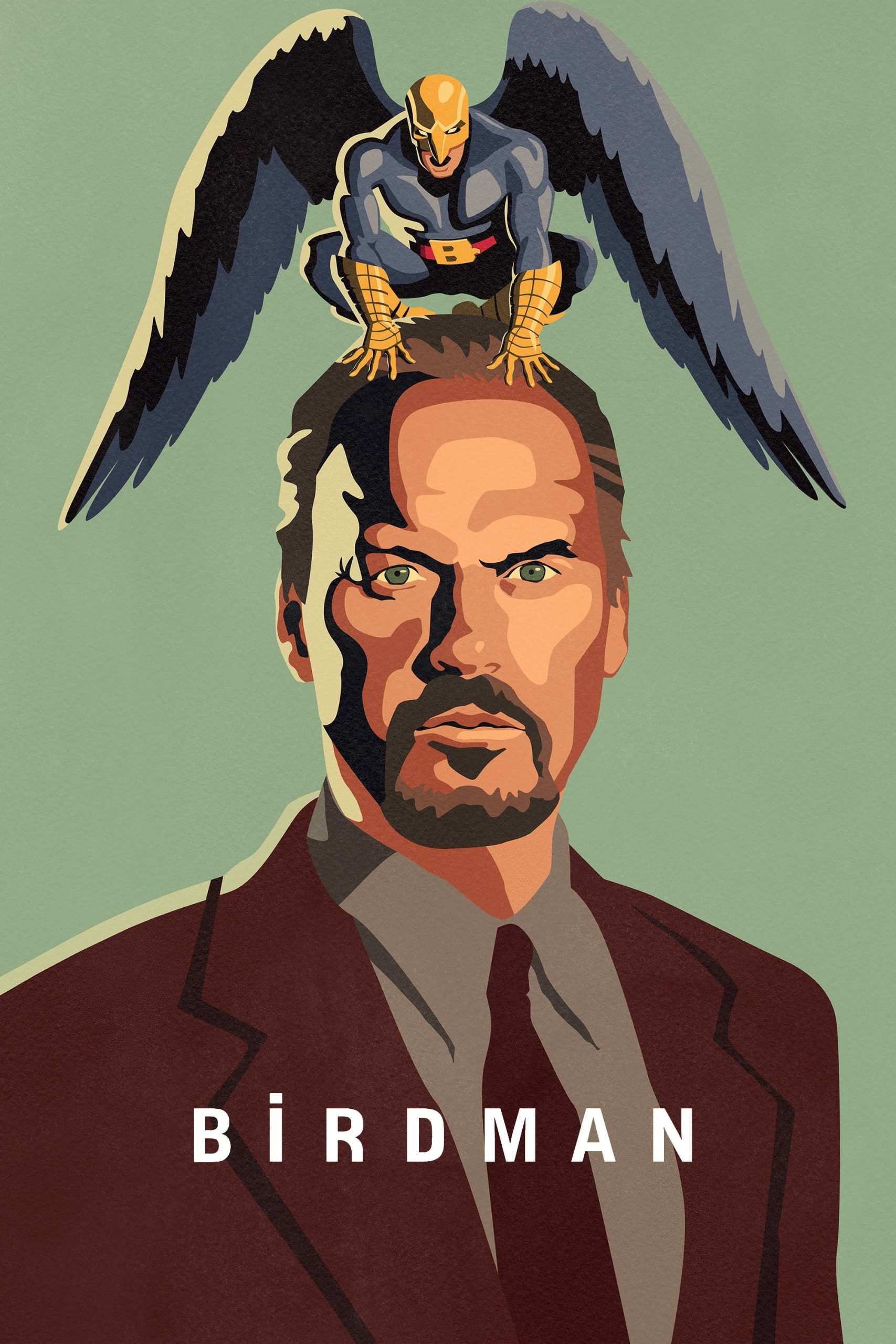
A fading actor best known for his portrayal of a popular superhero attempts to mount a comeback by appearing in a Broadway play. As opening night approaches, his attempts to become more altruistic, rebuild his career, and reconnect with friends and family prove more difficult than expected.
05 Sep Birdman or (The Unexpected Virtue of Ignorance) (2014)
Parasitic Nests
I have a particular interest in five different cinematic styles, worlds actually. One of them I have named the Hispanic style. It is characterised by:
- elements of magical reality, either in supernatural physics or synchronous connections.
- a belief that the world is rich, fecund. Occasionally female sexuality is interwoven. Characters are both in the world and part of the nature that is rich.
- layered storytelling.
- a laconic camera compared with others, as if there were dream dynamics at world.
- use of colour.
It so happens that most of the filmmakers using this style are what in the US we clumsily call Hispanic. More well known examples are:
- Pedro Almodóvar (Spain)
- Alejandro Amenábar (Chile)
- Juan José Campanella (Argentina)
- Alejandro González Iñárritu (Mexico)
- Alejandro Jodorowsky (Chile)
- Julio Medem (Spain)
- Fernando Meirelles (Brazil)
- Raoul Ruiz (Chile)
… and sometimes:
- Luis Buñuel (Mexico)
- Alfonso Cuarón (Mexico)
- Robert Rodriguez (Mexico)
- Guillermo del Toro (Mexico)
I like some of the projects these men have, simply because they works. Sometimes it transports and is so effective I feel as if healed and placed in a supernatural body. I think these techniques insert into dream urges and carry me in ways I have scant protections against. So I come to an Iñárritu film with some expectation. Some hope.
The problem with this style of filmmaking is that maintaining the technique requires a lot of overhead. Usually all a filmmaker has to worry about is the story and the wrapper. If he/she is a poor filmmaker, it is just a story and the worry is about characters and story structure. The wrapper is the collection of cinematic techniques used to inveigle into our inner narratives. Often this is just reliance on genre and stereotypes. A good filmmaker will worry about this though. For all his flaws, I credit Scorsese with attention to this. But it doesn’t get in the way. We don’t see it.
With Iñárritu and his peers, much, even most of what we get in the story and the wrapper is there to sustain these Hispanic narrative values. It is a matter of the viewer’s tolerance, I suppose, in deciding what is too much. Few viewers will give as much allowance as I do, but here I think it is too much: too much in the story; too much in the wrapper.
We are to forgive this because this is a movie about moviemaking (theater as movie), and about extreme risk and commitment.
So we have three main folds. These aren’t circular, but parallel.
The most obvious because it is in the story is the fold of the reality of our main character to the reality of films. That the films involved are his past films is nearly irrelevant. (More relevant is the actor’s bast as Batman or for that matter as Betelgeuse – Dogberry – Doug Kinney.)
Also rather explicit is the fold, a common one, of the world of making a movie to the world of the movie we see. Only Emma Stone escapes navigational issues in this one. Everyone else is placed in clumsy roles. I wish I did not allow the perfect elegance of Medem or Almodóvar to color my view of this.
And finally we have the folding of our world into Iñárritu’s. But because the clothes are so heavy, we only wear them for the duration of the film. Nothing sticks; no matter how hard I try, I leave this world when the film ends. I only have memories of the machinery and some admiration for the acting. Compare this to the masters. Compare this to things that you fall in love with and never wish to escape.
Posted in 2015
Ted’s Evaluation — 2 of 3: Has some interesting elements.


No Comments